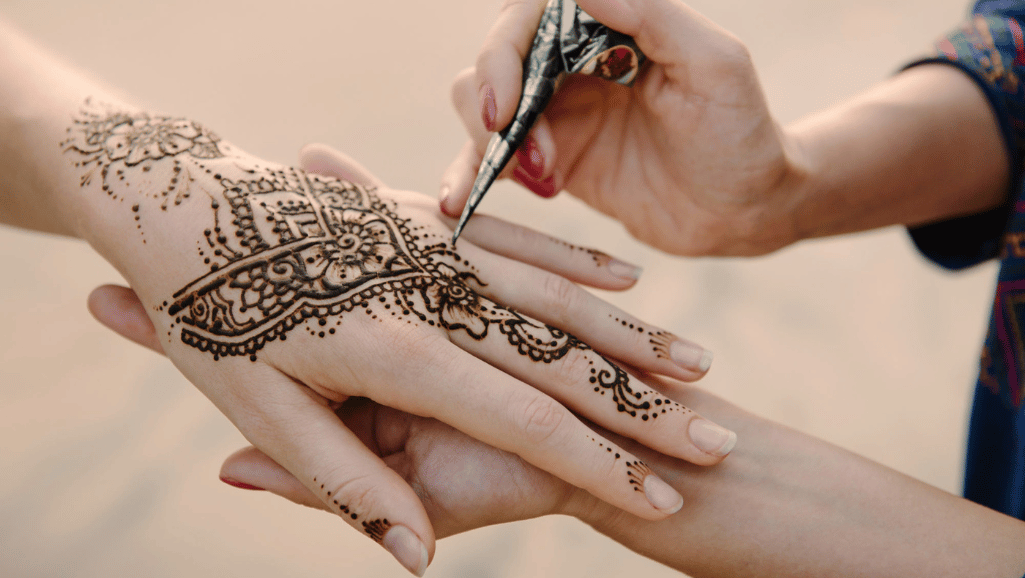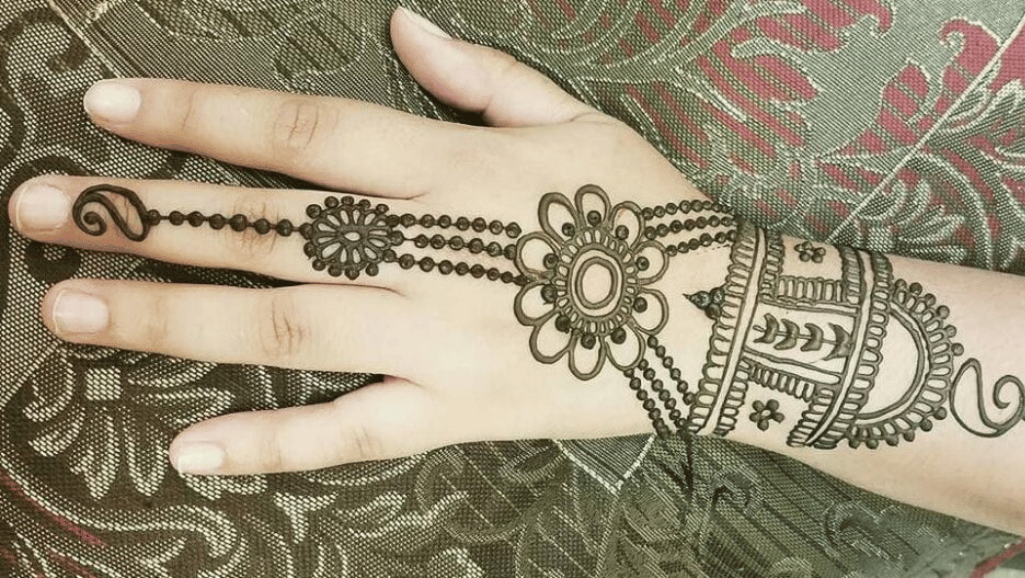Introduction
Henna tattoos have gained popularity in recent years due to their beauty and affordability. If you’re considering getting a henna tattoo, you may wonder about their longevity and maintenance. In this article, we will explore the lifespan of henna tattoos, how to care for them, and whether they can be made permanent. Let’s dive in and get the facts about henna tattoos. Are Henna Tattoos Permanent?
Key Takeaways
- Henna tattoos last between 4 to 7 days on the skin’s surface.
- Proper care and moisturization can help prolong the lifespan of henna tattoos.
- Avoid black henna, as it can cause allergic reactions and permanent scarring.
- Henna tattoos are not inherently permanent, but fresh henna paste can be continuously applied to make them last longer.
- Consult a reputable henna artist who follows safe practices to ensure a positive experience.
How Long Do Henna Tattoos Last?
Henna tattoos are known for their temporary nature, providing a painless alternative to permanent tattoos. But how long exactly can you expect your henna tattoo to last? Let’s explore the durability of henna tattoos and how proper care can extend their lifespan.
On average, henna tattoos typically last for about four to seven days on the skin’s surface. However, with a few extra steps, you can increase their longevity to one to two weeks. One popular method is mixing the henna paste with natural ingredients like essential oil of eucalyptus or tea leaves. These additions enhance the stain’s depth, resulting in a longer-lasting tattoo.
Proper Care for Prolonged Lifespan
Aside from mixing natural ingredients, properly caring for your henna tattoo plays a crucial role in determining its durability. Here are some tips to help your henna tattoo last longer:
- Avoid excessive exposure to water, as it can cause the tattoo to fade more quickly.
- When washing your hands, use a mild soap and avoid scrubbing the tattoo area.
- Moisturize your skin regularly to keep the tattoo hydrated and prevent it from drying out.
- Protect the tattoo from friction by avoiding tight clothing or excessive rubbing of the tattooed area.
By following these care instructions, you can significantly extend the lifespan of your henna tattoo and enjoy its beauty for a longer period.
Can Henna Tattoos Be Made Permanent?
Henna tattoos are a popular form of temporary body art that offer a pain-free alternative to permanent tattoos. While henna tattoos are typically meant to last for a few days up to two weeks, some individuals may be interested in making them last longer or achieving a permanent effect. However, it’s important to understand that henna tattoos are not inherently permanent and are generally intended to be temporary.
If you’re looking to extend the lifespan of your henna tattoos, there are a few techniques you can try. One method is to continually apply fresh henna paste every week. By regularly refreshing the design, you can maintain a more vibrant and longer-lasting henna tattoo. It’s worth noting that henna cones can be stored in the freezer for up to six months, allowing you to have a steady supply of fresh henna paste.
Another technique some individuals may employ is the use of additional ingredients to enhance the longevity of henna tattoos. For instance, some people mix lemon juice and white sugar with the henna paste before application. This mixture is believed to moisturize the henna tattoos, helping them to last longer and develop a darker stain on the skin.
However, it’s crucial to keep in mind that even with these methods, henna tattoos will naturally fade over time. Factors such as exposure to sunlight, friction from clothing, and regular washing will gradually diminish the intensity of the henna tattoo. So, while you can take steps to improve the upkeep of your henna tattoos, achieving a permanent effect with traditional henna paste is not possible.
Enhancing Henna Tattoo Longevity
Here are some tips to help maintain the vibrancy and longevity of your henna tattoos:
- Avoid excessive exposure to water, as it can cause the henna tattoo to fade quickly. If you need to wash your hands, use mild soap and be gentle when drying the area.
- Moisturize your skin regularly, as hydrated skin tends to hold onto the henna stain better.
- Avoid rubbing or scratching the henna tattoo, as friction can cause it to fade more quickly.
The Dangers of Black Henna

Black henna poses significant dangers to your health and should be avoided when getting a henna tattoo. Unlike natural, plant-based brown henna, black henna is not a safe option. It often contains paraphenylenediamine (PPD), a toxic substance commonly found in black hair dye.
Black henna dangers stem from its potential to cause severe allergic reactions and skin damage. PPD can lead to skin irritation, blisters, redness, and in some cases, even permanent scarring. It is important to prioritize henna tattoo safety and choose natural alternatives to black henna.
When getting a henna tattoo, opt for plant-based brown henna, which is generally considered safe and doesn’t contain harmful ingredients like PPD. Natural brown henna provides beautiful temporary tattoos without the associated risks.
Henna Tattoo Allergies
Allergic reactions to henna tattoos are not uncommon, and they can be exacerbated by the use of black henna. It is crucial to be aware of the symptoms of henna tattoo allergies, which can include:
- Itching
- Redness and inflammation
- Raised bumps and blisters
- Swelling
- Pain or discomfort
If you experience any of these symptoms after getting a henna tattoo, it is important to seek medical attention. Allergic reactions should not be taken lightly, as they can escalate rapidly and cause further complications.
Additionally, it is advisable to report any adverse reactions to henna tattoos, especially those resulting from black henna, to the relevant authorities. This ensures that others are informed and protected from similar experiences.
Henna Tattoo Safety Precautions
To prioritize your safety and reduce the risk of allergic reactions when getting a henna tattoo, consider the following safety precautions:
- Research the artist or salon where you plan to get your henna tattoo. Ensure they follow proper hygiene practices and use safe materials.
- Ask about the ingredients in the henna paste they use. Opt for natural, plant-based brown henna.
- Patch test the henna paste on a small area of your skin before getting a full tattoo to check for any adverse reactions or allergies.
- Maintain good aftercare practices by keeping the tattooed area clean and moisturized, avoiding excessive exposure to water, and protecting it from excessive friction.
- If you have a history of sensitive skin or allergies, consult with a dermatologist before getting a henna tattoo.
By taking these henna tattoo safety precautions, you can enjoy the beauty and cultural significance of henna tattoos while minimizing the risks associated with them.
| Black Henna Dangers | Henna Tattoo Safety | Henna Tattoo Allergies |
|---|---|---|
| Contains toxic substances | Choose natural brown henna | Itching and redness |
| Can cause allergic reactions | Research the artist/salon | Raised bumps and blisters |
| Severe skin damage | Ask about henna paste ingredients | Swelling |
| Permanent scarring | Patch test for allergies | Pain or discomfort |
Understanding Henna and Its Origins

Henna, scientifically known as Lawsonia inermis, is a flowering plant native to tropical regions of Africa and Northern Asia. For centuries, henna has been used to create beautiful and intricate temporary body art, popular in cultures across the globe. Let’s delve into the details of this ancient art form and understand its origins.
Henna plants usually grow up to 6 feet tall and thrive in warm climates. The leaves of the henna plant contain a natural dye called hennotannic acid, which is responsible for its staining properties. Harvested henna leaves are dried and ground into a fine powder, creating the base for the henna paste.
The process of creating henna paste involves mixing the henna powder with water to form a thick consistency. Some artists may also add lemon juice or tea to enhance the color and longevity of the stain. Once the paste is ready, it undergoes a resting period, allowing the dye to release and develop.
Henna tattoos, also known as mehndi, are created by applying the henna paste onto the skin using cones or brushes. The paste is left to dry for a few hours, and as it interacts with the skin’s proteins, it leaves behind a reddish-orange stain. As the henna tattoo oxidizes, the color deepens, and the stain becomes more prominent.
The beauty of henna tattoos lies in their intricate designs and the temporary nature of the art. Henna tattoos typically last for one to two weeks on the skin’s surface before naturally fading away. The duration may vary depending on factors such as skin type, location of the tattoo, and proper aftercare.
Ancient Origins of Henna
Henna has a rich history dating back thousands of years. It was first used in ancient Egypt and has since been a significant part of various cultures and traditions. Henna has been used for celebrations, weddings, festivals, and even religious ceremonies, symbolizing joy, beauty, and auspiciousness.
In addition to body art, henna has been used to dye fabrics, giving them a warm earthy hue. It has also been used as a natural hair dye, offering a safe and chemical-free alternative to synthetic hair colorants.
Today, henna tattoos continue to captivate people with their intricate designs, cultural significance, and the temporary nature of self-expression. Whether adorned as a fashion statement or as part of a traditional ritual, henna tattoos bring a touch of artistry and beauty to every occasion.
| Country | Culture | Henna Tradition |
|---|---|---|
| India | Hindu | Henna is an integral part of weddings and festive celebrations. |
| Morocco | Arab | Moroccan henna designs are known for their geometric patterns and symbolism. |
| Pakistan | Islamic | Henna holds cultural and religious significance, often used during Eid celebrations. |
| North Africa | Berber | Amazigh women adorn themselves with henna tattoos as a symbol of beauty and prosperity. |
| Middle East | Various | Henna is commonly used for celebratory events, such as engagements and religious holidays. |
Exploring the Henna Tattoo Process
The process of getting a henna tattoo involves several steps to ensure a beautiful and long-lasting design. Here is a brief overview of the henna tattoo process:
- Cleansing the skin: Before applying the henna paste, clean the skin to remove any oils or dirt that could affect the adherence of the paste.
- Choosing a design: Select a design from the artist’s collection or discuss your ideas to create a personalized henna tattoo.
- Application of henna paste: The artist applies the henna paste onto the skin using cones or brushes, creating intricate patterns and designs.
- Drying and setting: Allow the henna paste to dry for a few hours to ensure the design sets properly. It is recommended to avoid smudging or rubbing the tattoo during this period.
- Sealing the henna design: To protect the henna and enhance the color development, apply a mixture of lemon juice and sugar on the dried henna.
- Waiting time: Leave the henna paste on the skin for at least 4-6 hours to allow the dye to penetrate and develop a deeper stain.
- Removing the paste: Gently scrape off the dried henna paste, revealing the vibrant reddish-orange stain beneath.
- Caring for the henna tattoo: To extend the life of your henna tattoo, avoid excessive washing, swimming, or exposing it to harsh chemicals. Moisturize the area regularly to keep the skin hydrated.
Now that you understand the origins of henna and the tattoo process, you can appreciate the artistry and cultural significance behind henna tattoos. Whether you’re getting a henna tattoo for a special occasion or simply to embrace temporary body adornment, henna offers an enchanting and meaningful experience.
Conclusion
In conclusion, henna tattoos provide a temporary and pain-free way to adorn the skin with beautiful designs. While they are not permanent, henna tattoos can last up to one or two weeks on the skin’s surface, depending on proper care and moisturization. They offer a great alternative to traditional tattoos, allowing individuals to experiment with different designs without the commitment.
It is important to note that black henna should be avoided due to its potential dangers. Black henna often contains toxic substances that can cause allergic reactions and permanent scarring. To ensure safety, it is recommended to choose natural brown henna and consult a reputable artist who follows safe practices.
Whether you are attending a cultural event or simply looking to try something new, henna tattoos can be a fun and artistic expression. Just be mindful of their temporary nature and the importance of choosing the right type of henna. Enjoy the beauty and creativity of henna tattoos while keeping your skin safe!
Are henna tattoos permanent?
How long do henna tattoos last?
Can henna tattoos be made permanent?
What are the dangers of black henna?
What is henna and its origins?
Forhad
Forhad's writing is not just about the artistry of tattoos or the latest trends in the industry; it's an exploration of the deep-rooted connections people have with their tattoos, reflecting personal narratives, cultural histories, and moments of transformation. Through a mix of in-depth features, personal narratives, and insightful analyses, he sheds light on the multifaceted nature of tattooing, revealing the emotional and cultural layers that lie beneath the surface.


















